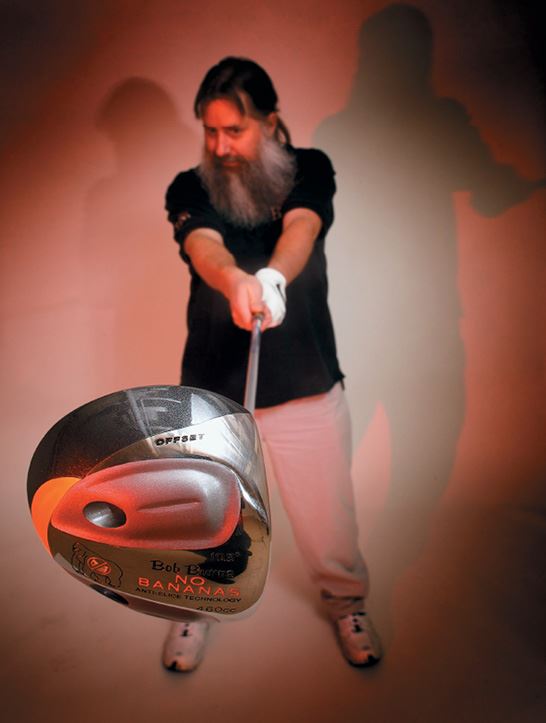 Early last year we put out the call to you—our readers—for the sliciest slicer the world has ever seen. As a result, we encountered some bona fide doozies. One was a young woman who literally rotated her hands backwards (or so she claimed) to help control ball flight, unknowingly making her slice far worse. Her case was so obviously bad, however, that after one trip to her local PGA professional she soon got a handle on the problem, quite literally.
Early last year we put out the call to you—our readers—for the sliciest slicer the world has ever seen. As a result, we encountered some bona fide doozies. One was a young woman who literally rotated her hands backwards (or so she claimed) to help control ball flight, unknowingly making her slice far worse. Her case was so obviously bad, however, that after one trip to her local PGA professional she soon got a handle on the problem, quite literally.
Another case was a colorful gentleman whose wild swing was only matched by his extreme temper. We caught up with him one morning on a trip to Boise, and by the time we had set up our cameras, he had snapped a club over his knee, thrown another in the water and kicked his remaining clubs—bag and all—back to the parking lot. We have not seen or heard from him since.
Other cases fell in our lap but didn’t pan out, mostly because people refused to have their swings recorded for the world to see. Spring came and went. Then summer cooled into fall and still we had no monster slice to put to the test.
Our fortunes changed one late autumn day when we were approached by Jim Donovan, our resident color correction Guru in the magazine’s production department. “I got a slice for ya,” he said. “A WICKED slice.” After a few swings and a few wayward shots, we knew we had our man.
It is true that technology is no substitute for a fundamentally sound golf swing, but it can be a good start in at least showing someone the light at the end of the tunnel. Armed with a good tool and a very good instructor, most if not all slicers should have cause to rejoice. That even includes Jim, whose left-to-right monstrosities are the bane of courses throughout his home region of eastern Idaho.
As you can clearly see, Jim is not your average-looking rock knocker. Yet his problem, extreme as it is, affects a considerable percentage of all players.
Again, bear in mind that instruction is critical for diagnosing the problem and prescribing a course of treatment. At its core, the garden-variety slice is not a mystery. Yet the fixes are all over the map and—as our resident instructional contributor Jeff Thomsen will lament—most prescriptions come from the most unqualified sources you can imagine. It’s worth repeating: There is just no substitute for instruction from a certified PGA professional.
But what about the rest of the treatment plan? You could divide it into at least two major parts: repetition of good habits, and the maximization of positive feedback.
If you keep repeating a mistake, you will eventually perfect it—that’s the downside. But after engaging in some good instruction and applying the lessons to a repeatable, correct movement, the only thing that can get in your way is the wrong equipment. For slice-a-holics, “wrong equipment” can include any club that gives you that “slicey” feeling. To address this dilemma, there are a few very specialized—and supposedly quite effective—clubs that promise to turn this problem on its head.
We now have such a club—the Bob Burns No-Bananas driver. Next issue, we will show you a shot pattern that lays out the results of Jim’s slice with his existing equipment, followed by the same swing with the Burns. Finally, we’ll follow Jim through an intense lesson aimed at curing his slice for good, then re-compare.
It all begs the question: Is it possible that the “right club” can make such a difference when it comes to the super slice? We shall see.
Note: Background info on the No-Bananas driver can be found at www.bobburnsgolf.com. Check it out!